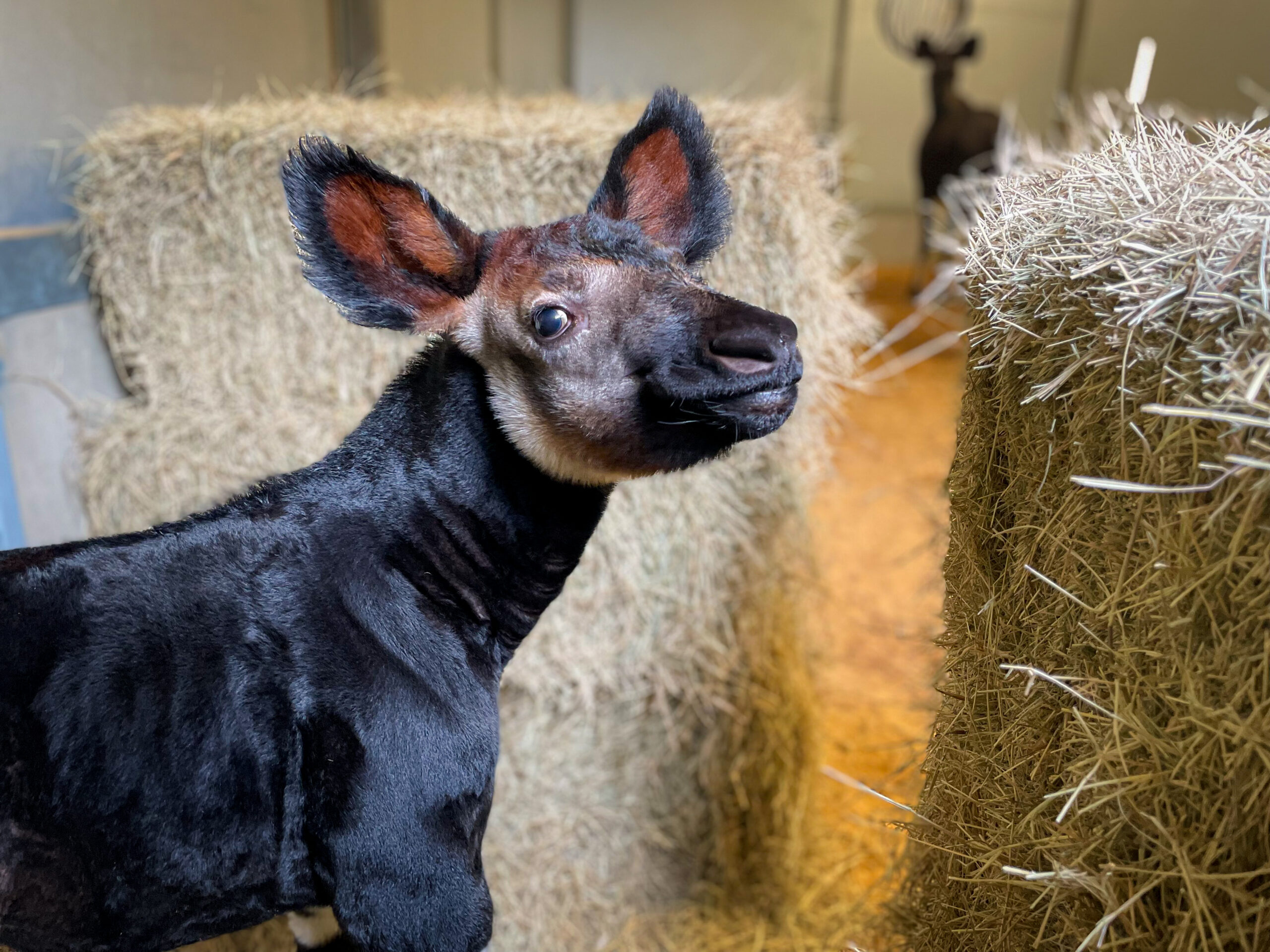The Houston Zoo has announced the public debut of a baby okapi named Sylvester. The one-month-old male calf was named in honor of Houston’s Mayor Sylvester Turner and has already doubled his birth weight. Okapi mothers communicate with their offspring through infrasonic sound, which is inaudible to humans. Although often mistaken for a type of zebra, the Okapi is the giraffe‘s only living relative. Okapi is native to the rainforests of the Democratic Republic of Congo, an area threatened by the destructive mining of the metal tantalum used in electronic devices. By recycling electronics, zoo visitors can help save animals like the Okapi.
Once upon a time, nestled in the lush heart of Africa, a creature stirred, eluding human detection for centuries. Bathed in the cloak of obscurity and shrouded in mystery, it seemed Mother Nature had penned a cryptic fable. So, folks, fasten your seat belts and get ready for an adventurous leap into the realm of the Okapi.
Picture this: a beast with a horse’s velvety elegance, the giraffe’s rugged stature, and the deer’s peaceful charisma. A fanciful mosaic of nature, you might assume. But behold, this isn’t a mythical creature from a J.R.R. Tolkien saga, but the tangible, living Okapi.
The Okapi, a grand illusion of the wild, is a one-of-a-kind blend of the horse and zebra – or so it appears! This enchanting mammal shares a surprising cousinhood with the graceful giraffe.
Nestled in the remote rainforests of the Democratic Republic of Congo, Okapis are elusive critters that roam the understory, weaving tales that delight even the most jaded of us. Their hindquarters bear striking zebra-like stripes, a dazzling spectacle against the monochrome green of the jungle. Yet, their forequarters tell a different tale, carrying a majestic horse’s solid, dark hues.
Imagine watching an Okapi strut in its primeval habitat, tongue reaching out to snare a tasty leaf from a towering tree. Its tongue, a whopping 18 inches long, is its secret weapon and nature’s Swiss army knife. It functions as a hand, a leaf snatcher, and even an occasional ear cleaner.
But don’t be fooled by their tranquil demeanor and shy glances, as these creatures are seasoned survivalists. Their stripy stockings are excellent camouflage, a masterful adaptation for playing hide-and-seek with predators. Their hearing is acute, a perfect alarm system that alerts them to the faintest whispers of danger.
Unfathomable as it may seem, the Okapi remained a specter in Western science until the early 20th century. This earned them the moniker “African Unicorn.” A testament to their elusive charm? Perhaps. Or, a salute to the vast unknown that still waits to be discovered, even in our advanced age.
For many, a glimpse of the Okapi is a prized sighting, a brush with an exquisite relic of evolution. Yet, their existence is threatened. Poaching, habitat destruction, and civil unrest continue to gnaw at their numbers. The Okapi’s battle is our battle, for its survival signifies the enduring resilience of nature amid the turmoil.
While we journey into a future of increasing interconnectivity, let’s not forget the lessons these unassuming creatures teach us. Like the Okapi, let us learn to treasure our uniqueness, adapt and endure, and celebrate the enigma within each of us.
With each stride into the wild, every pursuit of the unknown, we unravel the tapestry of life a bit more, inching ever closer to understanding our place in the grand scheme of things. The Okapi, an elusive enigma and survivor, is an enchanting guide on this journey, inviting us to gaze, wonder, and marvel at life’s grand spectacle.
So, the next time you yearn for a dose of wild mystery, remember the Okapi. Let its tale spark your curiosity, kindle your imagination, and inspire you to respect and conserve our planet’s intricate biodiversity. There’s always an adventure waiting in the heart of nature, sometimes striped, often mysterious, and always, invariably, magical.


